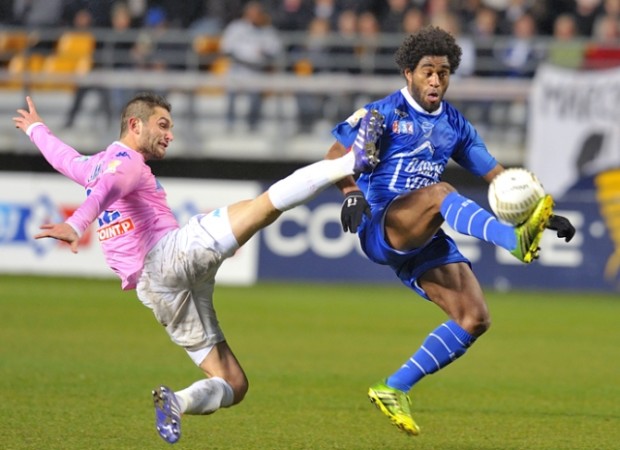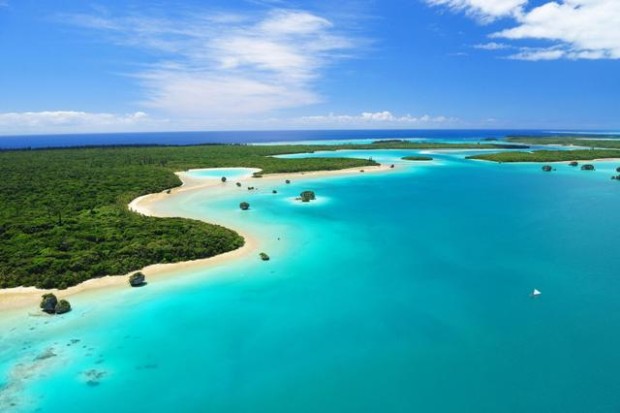
 Coming amidst the final throws of a harum-scarum domestic campaign, it’s hard to reason why my football thoughts have drifted Down Under of late.
Coming amidst the final throws of a harum-scarum domestic campaign, it’s hard to reason why my football thoughts have drifted Down Under of late.
Of course, one reason is the sad news reaching us of the devastation caused by Cyclone Pam which wiped out much of the 83-island Pacific state of Vanuatu in recent weeks, decimating the lives of so many of its 260,000 island inhabitants.
To us back in Blighty it serves to highlight the sheer remoteness of a corner of the world that most of us will never know.
Back in our comparatively puerile footballing world, I guess the ‘fade out point’ may in time be traced back to seeing the same billion dollar prima donnas scowling on our back pages; or perhaps plain disillusionment over the continuing Qatar debacle – no wait, don’t turn over, no more rainforest shall be felled for FIFA propaganda parchment in my name.
I want to follow up on Tomos Knox’s excellent piece of escapism from Issue 27 of LT: ‘Far Away Football – The South Atlantic Ocean’.
Tomos’ Atlantic tales of pitch-invading tortoises and secluded island nations’ struggles to fulfil fixtures certainly helped free my, and I’m sure many others’ minds of ‘must-wins’, ‘six-pointers’ and ‘dodgy World Cup dollars’.
So what of their Pacific brethren? When cast adrift in a Pacific dream, I have pondered whether an Oceanic nation will ever be represented on football’s biggest stage again.
If New Zealand, with a population 20 times the size of fellow Oceania Football Confederation country New Caledonia (nope, I didn’t know it existed either – but interestingly it’s the birthplace of 1998 World Cup winner Christian Karembeu) can’t qualify for a World Cup, then what chance the rest of these idyllic but forgotten football islands?
In fairness to the Kanaks (New Caledonia natives) they only installed their first FIFA approved artificial pitch at the Hnassé Stadium in the capital Lifou in 2008.
They do, however, have a club side, FC Gaitcha (who curiously finished seventh of 12 teams in last season’s Super Ligue?), representing them in the 2015 OFC Champions League: the winner of which plays in this year’s World Club Cup, in Japan.

Troyes’ Georges Gop-Fenepej plys his trade in Ligue 2
Travelling even further afield, five current Caledonian internationals have made the 10,000-mile trek from playing island futsal and beach soccer to the French leagues, looking to follow in the footsteps of Lifou legend, Karembeu: most notably forward Georges Gop-Fenepej, at Ligue 2 Troyes; and midfielder Cesar Lolohea, at Stade Lavallois.
New Caledonia trailed in as runners-up after losing home and away to an unbeaten New Zealand in the four-team final group phase of qualifying for Brazil 2014, before the Kiwis crashed at the final hurdle (9-3 on agg) to fourth-placed CONCACAF nation Mexico.
The All Whites have made it to the big show twice, however, firstly in Spain in 1982 and then in South Africa, 2010 – where the Kiwis actually held the distinction of being the only unbeaten side at the tournament (drawing all three of their group games).
Oceania’s confederation – covering a patch just shy of a third of the earth’s surface – is made up of just 11 associations, compared to 53 currently in UEFA’s Euro 2016 qualifying.
Big fish New Zealand lead the way (ranked 136 of 209 FIFA nations), ahead of minnows New Caledonia (151), Tahiti (164), the Solomon Islands (184), Vanuatu (191), Fiji, Samoa (=192), Tonga (196), Papua New Guinea (199), American Samoa (200), and the Cook Islands (206).
Minute dots on the map: Kiribati, the Niue Islands and Tuvalu are non-FIFA associations… lucky them. Maybe Tomos could organise a kick-about between them and the Falklands?
As in the States, soccer in the Oceanic region has to fight its corner in a congested market place with Aussie rules, cricket and rugby; most rugger chaps Down Under wouldn’t be seen dead at a game of wendy ball.
There’s no question that these remote realms can hold their own against the best egg-chasers – the All Blacks are world No1 and 2 (in Union and League), while Samoa, Fiji and Tonga out-rank Six Nations side Italy – but can they do it with the correctly shaped balls?
 Teensy Tahiti (or French Polynesia) upset the apple cart by winning the 2012 Oceania Nations Cup, seeing off fellow relative novices New Caledonia 1-0 in the final – and in the process breaking the Australia/New Zealand hegemony on the title.
Teensy Tahiti (or French Polynesia) upset the apple cart by winning the 2012 Oceania Nations Cup, seeing off fellow relative novices New Caledonia 1-0 in the final – and in the process breaking the Australia/New Zealand hegemony on the title.
As winners, Tahiti qualified to represent the OFC at the 2013 Confederations Cup in Brazil, where they duly lost 1-6 to Nigeria, 0-8 to Uruguay and 0-10 to Spain. Chastening as those defeats were, it was the first time in its 42-year history that neither the Aussies nor Kiwis had taken the spot. So could this be the beginning of the minnows
biting back, perhaps?
Logistically, it’s certainly a tall order for the Davids to topple Goliaths like New Zealand, let alone a team outside of the region.
Tahiti have to fly 2.5 hours to meet their nearest OFC neighbours, the Cook Islands; to play a non-OFC nation, it is 17 hours east to Lima, Peru; and 11.5 hours west to Brisbane – with the Pom-bashers now plying their trade as an Asian football nation as a means of improving their chances at future tournaments by facing stiffer competition.
And Oz boss Ange Postecoglou’s men are doing a tidy job of it too as they leaped 37 places to world No63 after winning the Asia Cup, held in Australia in January.
Coming as no great shock to anyone, despite it being the first ever senior men’s football tournament to be staged on the continent, almost two-thirds of a million fans filed through the turnstiles during the tournament, posting a 50 per cent increase on attendances from 2011 when the cup was held in… Qatar!
It gets you thinking: if only our ‘convict’ cousins had deeper pockets and they were hosting in 2022, surely there would have been calls (and inevitable golden handshakes) to open up extra places for the OFC nations?
As part of his election manifesto, FIFA presidential candidate, Luis Figo, may have swung a few Pacific votes his way by stating that he would like to expand the World Cup to 40 teams or even the possibility of staging two 24-team
competitions across two continents, followed by a final knockout phase.
So with Aussie success, an Under-20 World Cup being held in New Zealand next month and the likes of Tahiti helping to shine a light out in to the dark corners of the Pacific blue, could we realistically see an OFC nation at Russia 2018 or Qatar 2022?More shockingly, could we even see an archipelago nation like New Caledonia making waves when qualifying kicks off in August?
Well, with the OFC route to Russia remaining the same as it was for Brazil, and with the Kiwis dominating the pond but struggling to make significant strides forward, for now, sadly, it seems unlikely. But with world football’s top brass keen to keep expanding its horizons to exotic new lands, surely the time must come soon to award outright Pacific places or, better still, head on Down Under.
*This article was originally published in LT’s Issue 29 – April


Book Reviews
Book Review: Chris Towers finds right mix

Book Reviews
Book Review: Sir Geoff Hurst hits net











